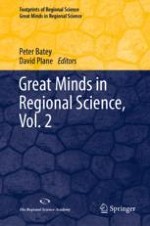2023 | OriginalPaper | Buchkapitel
Leslie Curry (1923–2009): Expounder of the Random Spatial Economy and Spatial Autocorrelation
verfasst von : Daniel A. Griffith
Erschienen in: Great Minds in Regional Science, Vol. 2
Aktivieren Sie unsere intelligente Suche, um passende Fachinhalte oder Patente zu finden.
Wählen Sie Textabschnitte aus um mit Künstlicher Intelligenz passenden Patente zu finden. powered by
Markieren Sie Textabschnitte, um KI-gestützt weitere passende Inhalte zu finden. powered by
